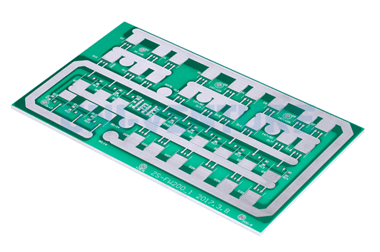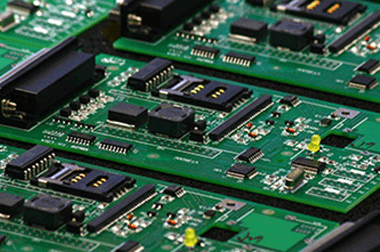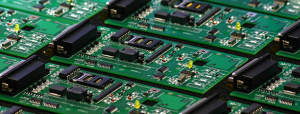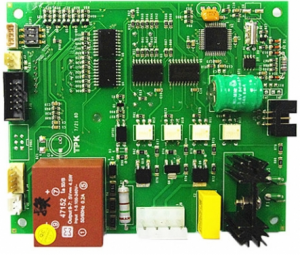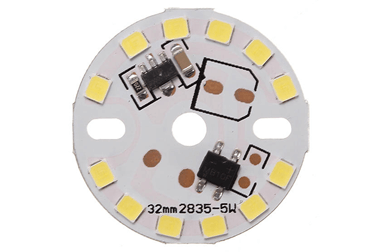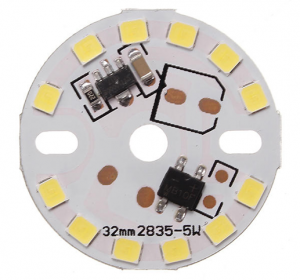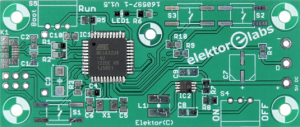Aluminum PCB Manufacturer: All that you need to know
Aluminum PCB manufacturer understand the importance of modern Printed circuit Board Trends. They know that to produce high quality and robust Printed Circuit Boards, they need to evolve. Instead of relying on traditional materials, it is time to move on to something more sophisticated.
Today, we tend to see some of the circuit boards outperforming others, mainly because manufacturers use premium and high-quality material for this production. There is no denying the fact that enhance the raw material tends to improve the quality of the final product.
The modern manufacturer tends to use several materials for Printed Circuit boards creations. However, among these materials, Aluminum seems to be the best. It offers several advantages and provides better quality printed boards.
In this article, we will be discussing the difference between standard Printed Circuit Boards and Aluminum Printed Circuit Boards. Also, we will talk about the advantages of using Aluminum Printed Circuit Boards for your products.
Table of Content
- Introduction
- What is Standard PCB?
- What is Aluminum PCB?
- Importance of choosing the right Aluminum PCB manufacturer
- Summary
Introduction
The quality and working of Printed Circuit Boards greatly depend on the raw material. Different material offers different functionalities and advantages. When choosing a printed circuit board, you first need to focus on your product requirements.
After that, see the type of PCB, you would want to incorporate. Even though aluminum PCB manufacturer offer great quality and improve product performance, but they are not always the best choice. Something, you need to choose Printed Circuit Boards other than Aluminum PCBs.
Let us have a look at what a standard Printed Circuit Boards are, and what are its pros and cons.
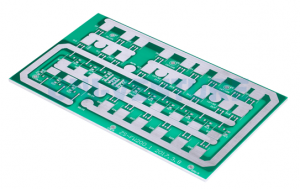
What is a Standard PCB?
Standard Printed Circuit Boards usually uses ceramic, polymers, fiberglass, or any other non-metal material as their case. They use copper and dielectric as the most visible and prominent metal incorporating several layers of material.
Slightly advance, Printed Circuit Boards use FR-4 as a substrate. These PCBs do offer better quality in comparison to the other using a non-metal base. One of the major reasons for using some of these materials is the affordability factor.
For instance, fiberglass is among the most common substrate material due to its affordable price as well as moderate robustness. Nonetheless, you can make this board a bit more conductive by incorporating several layers of copper, silkscreen and solder mask. With this, it is also possible to, effortlessly outline component locations.
These layers on the standard Printed Circuit Board can appear on either one side, or both sides. Manufacturers even offer multi-layer stack up. The usage of standard Printed Circuit Boards is endless. You will find them in almost every consumer application.
Since their capability, greatly depend upon the manufacturer as well as the material. Thus, they can power both low-end as well as high-end electronics alike. For simple and less complicated devices such as calculators, the manufacturer uses single-sided PCBs.
For more complicated and convoluted consumer products, you might have to opt for either two sides or multi-layer PCBs.
Standard Printed Circuit Boards: Merits and Demerits
- A standard PCB offers several benefits. Below we have listed some of the top benefits of using a standard Printed Circuit board.
- The technology is fully matured. They are adaptable and well rounded.
- Standard PCBs offer great flexibility in terms of substrate options. Thus, you can determine the board’s price effectively.
- It can power both low-end as well as high-end consumer products.
- Using fiberglass as the substrate material decreases the cost of boards drastically.
- You can use flex substrate or radio-frequency substrate to suit specialty applications
- To enhance the robustness of the board, use FR4 as the base material.
Demerits
- Despite using high-quality base material, the product is prone to heat and stress.
- It might not offer as much durability as you want.
- Might not be a good choice for extremely sensitive and high-temperature environments
- To dissipate the heat, you would have to use additional components such as copper-filled vias and heat skins. Doing this will have a direct impact on the price. The overall cost of the board is bound to increase.
What is Aluminum PCB Manufacturer?
Aluminum Printed Circuit Board has almost the same layout as a standard PCB. You can have either one layer or multiple layers of copper, silkscreen and solder mask. The main difference lies when it comes to the substrate.
Instead of using traditional material such as plastic or fiberglass as a substrate, aluminum PCB manufacturers use a metal substrate. The base is usually a combination of aluminum. For instance, you can have a printed circuit board that has a combination of aluminum and fiberglass as the metal core.
It is also possible to use entirely metal for the base, but generally, we tend to see a combination. Usually, there are single-sided aluminum PCBs. Although you can create double-sided aluminum Printed Circuit Boards, even the single-sided PCBs offer robustness and quality.
You can also have multi-layer aluminum Printed boards, but these boards are extremely difficult for the manufacturer. Very few manufacturers have the equipment and the skills to design and develop multi-layer Aluminum PCBs.
Normally, we would see aluminum boards in power converting electronics. They are also extremely popular in the LED industry. The reason being, they have the ability to disparate heat efficiently. An LED creates a high level of heat, and aluminum circuit boards are able to direct heat away from the components. Thus, we see an increase in the life span of an LED device.
In addition, the aluminum safeguards the device components from undue heat. It offers stability to the products. The aluminum substrate is common in household lighting, stop lighting and streetlights. They even allow the power converters to regulate electronics and change the current.
Due to their efficiency, and effectiveness, other industries are also using aluminum Printed Circuit Boards in their products.
Printed Circuit Boards using Aluminum Substrate: Merits and Demerits
Like standard Printed Circuit Boards, Aluminum PCB offers a wide range of advantages. Below are some of the most common advantages:
- They are perhaps the most thermal conduction Printed circuit Boards available.
- They successfully keep the heat away from the vital components.
- Aluminum Printed Circuit boards handle higher density circuits.
- They always ensure minimal circuit damage.
- They are an excellent choice for large power levels due to their high heat tolerance ability.
- These PCBs have a lower risk of breakage as the aluminum alloys offer physical durability of a high level.
- Aluminum is environmentally friendly and reasonable, especially when compared to other environmentally friendly materials.
The demerit of Aluminum Printed Circuit Boards
- These Printed Circuit Boards are more expensive in comparison to the Standard PCB.
- If your application does not involve high temperature then it is not a wise decision to invest in the aluminum core.
- Flexible aluminum might fit into smaller electronics, but it will not be able to withstand the stress of vibration.
Key Difference between Standard PCB and Aluminum PCB
Aluminum is among the most common material used in metal core Printed Circuit boards. Despite having almost the same layout, there are numerous difference between the standard PCB and the Aluminum PCB.
The key differences are as follows
Price Comparison
For starters, let us focus on the price factor. FR-4 Printed Circuit Boards are in the industry long enough to be reliable and effective. They are also cheap and affordable especially when you use fiberglass as the base material.
Aluminum PCB, on the other hand, is expensive. Although, it might be less expensive in comparison to incorporating extra copper to dissipate heat, yet it is more expensive than the standard PCB in general.
In addition, the thermal management of Aluminum PCBs has a direct impact on its price. The higher their ability to conduct heat, the expensive they become.
Heat Performance Comparison
One of the key differences between the standard Printed Circuit board and the Aluminum PCB, is the ability to conduct heat. Electronics producing a high level of heat should always go with aluminum boards.
Unlike standard boards that are not able to handle the heat dress and cause failure, aluminum PCBs are effective. They are considered to be one of the best boards for conducting heat and keep the components of the electronics safe.
The biggest example of aluminum PCBs is LED lights. LED lights generate a lot of heat and only aluminum boards are able to handle this heat level effectively.
Stack Up Technique
Although, the basic layout of both these PCBs is similar, however, they do have a slight difference in terms of stack up technique. We mostly see single-sided aluminum PCB or at max double-sided Aluminum PCB.
Whereas there is no limit in terms of standard PCB layering. You can have as many layers as you want. In addition, the aluminum PCB has a dielectric layer. Something you will not see in the standard PCB. Due to this dielectric layer aluminum can withstand a high level of heat.
Applications Comparison
We do tend to see standard PCB more in comparison to aluminum PCB. The reason being, aluminum PCBs are effective for that application that requires a high level of heat management. On the other hand, standard Printed Circuit Boards are used in almost all consumer products.
For instance, you will find standard PCBs in laptops, or calculators, whereas for an LED product, you will need to have aluminum PCBs.
Determining the type of Conductive Layer
Of course, several factors need consideration before you finalize on a certain type of Printed Circuit Board. For instance, you need to see your budget and product requirements. If the product does not have a high heat dissipation requirement, then you can enjoy the low-cost standard PCBs.
However, in case the product needs proper heat management, you will have to pay extra for aluminum PCB. After all, the objective of using Printed Circuit Boards is to enhance functionality and increase shelf life. If you compromise on the quality of the board, you are unlikely to have the desired results.
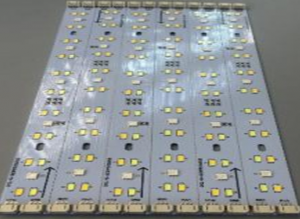
Importance of choosing the right Aluminum PCB manufacturer
A Printed Circuit Board plays a vital role in defining the quality and longevity of your product. Therefore, you simply cannot compromise on its quality. Having a high-quality PCB is vital, but the more important aspect is to have a high-quality manufacturer.
Now if you hire a low-quality manufacturer, it is highly less likely that you will get high-quality PCBs. There are several PCB manufacturers, but KingPCB offers the best product and services. You will not come across a manufacturer that can meet their standards of design, development, and production.
KingPCB promises to deliver only the highest quality Printed Circuit Boards. They ensure that every piece that they create meets the industry’s highest standards. You will never see any problem with their quality.
They have the best staff, and their technical team promises to deliver only the best-Printed Circuit Boards available. What is great about them is their ability to handle projects of all sizes. You can order them even a small number of Printed circuit boards, and they will deliver these boards effortlessly.
Also, they will ensure that every circuit board is of high quality. After all, their main objective is to deliver high-quality products and services.
Read About: SMT PCB assembly
Summary
The aluminum PCB manufacturer firmly believes in the versatility of aluminum. Many of you think that aluminum is used for the construction of soda cans, but its usability goes beyond that. Aluminum is among the leading conducts, it is non-magnetic and quite malleable. Thus, a wide range of industries around the globe uses Printed Circuit Boards.
Aluminum offers endless advantages including being eco-friendly, less expensive and heat dissipative. Likewise, Aluminum PCBs offer outstanding quality. They are the best choice for the application that generates a high level of heat.
These Printed Circuit Boards not only stand high heat levels, but they also tend to enhance the performance of the application and increase their shelf life. They are sure to generate better results in comparison to other Printed Circuit Boards.


